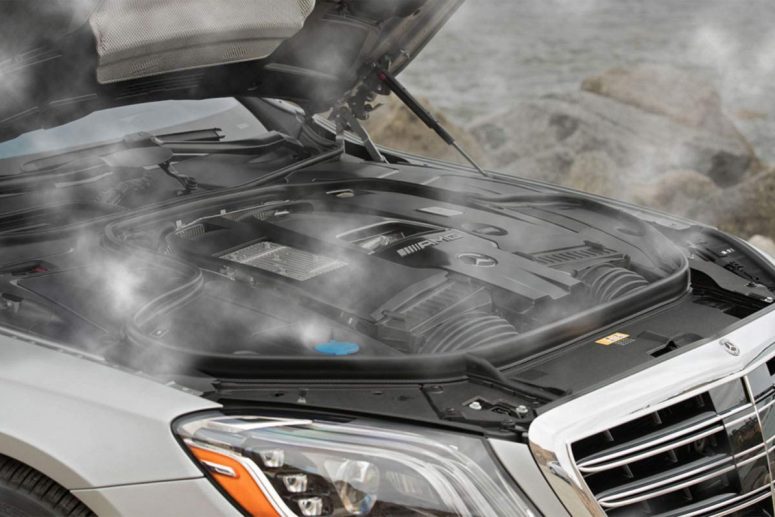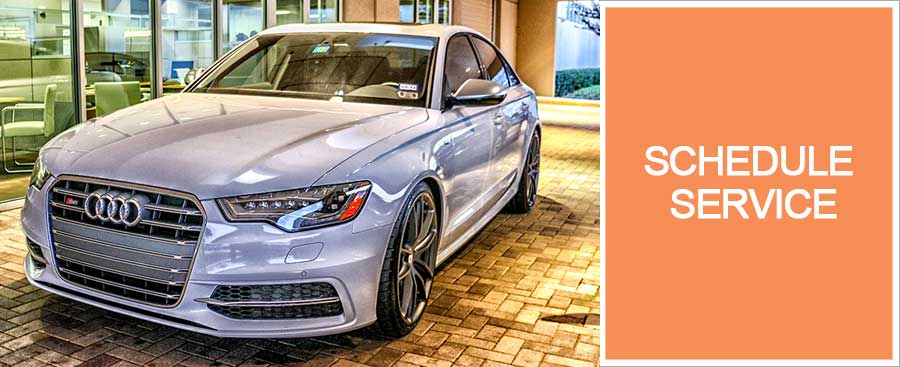Has your Low Coolant Light come on?
Here is what the low coolant light means on your car and the (usual) suspects behind why your low coolant light is on.
As you have probably already guessed, the most likely reason for your Low Coolant Light to be on is…because your car is low on coolant. Occam’s Razor strikes again. Your European car has a coolant level sensor with a floating-level which rises and falls with the coolant level in your radiator. If the level falls below a critical amount of coolant in the radiator or expansion tank (attached to the radiator via a hose or pipe), the sensor sends a signal to the vehicle’s onboard monitoring system which then turns on the low coolant warning light on the instrument panel in order to alert you of the issue. Predictably, a low coolant light = low coolant in a vast majority of instances. So now, the more important question becomes “why is my car low on coolant?”
The most likely culprit for low coolant levels is a leak somewhere in the system. Below, we’ll dive further in the types coolant leaks that could be present, how you might be able to detect some leaks and list a few of the other, less likely causes of a low coolant light that don’t have to do with a coolant leak. But first, let’s do a quick recap on what engine coolant does and why it’s so critical for your engine’s cooling system to be kept in good operating condition at all times.
Engine Coolant & Why It Matters
What is engine coolant? Essentially, it’s a mixture of water and chemicals that serves to regulate the engine’s operating temperature and prevent it from overheating. When you consider that your engine operates by generating a rapid series of contained explosions produced by the combustion of gasoline or other liquid fuels, it’s easy to see why keeping all that heat produced by it under control is so critical, let it get out of hand.
With insufficient levels of coolant to regulate your engine’s temperature, it can quickly overheat. When an engine overheats, it becomes increasingly susceptible to breakdown, considerable amounts of damage, and soon thereafter, catastrophic failure. If that sounded tremendously expensive to you, that’s because it definitely is. So, let’s move on to the types of leaks that can occur that rob your engine of its precious reserves of life-saving coolant.
Types of Coolant Leaks
External Coolant Leaks
This is the easiest type of leak to catch before it becomes bad enough to drain your coolant down to dangerously low levels that will trigger your low coolant light to come on. Typically, you can first notice the results of these leaks in the form of coolant dripping and puddling up underneath your car, though this is not always the case. External leaks are cracks/holes/splits/etc. that occur in the parts of the cooling system that are situated on the outside of the engine, such as:
- Hose(s)
- Radiator
- Water Pump
- Heater Core
- O-Rings/Seals
Note: Not every puddle under your car is indicative of a coolant leak. If you discover a pool of liquid under your car, check to verify that it is, in fact, coolant and not something else. For instance, condensation from the air conditioning system can often be found dripping from the engine compartment and pooling on the ground and is totally benign. Coolant can be easily distinguished from other fluids that might be leaking such as oil, brake, steering, or transmission fluid by its watery consistency and by its color, which will vary depending on what make the vehicle is.
Internal Coolant Leaks
These leaks are tougher to detect/diagnose and often the first sign that something is wrong is when the low coolant light comes on to warn you. Unlike the external variety, internal leaks won’t leave any tell-tale puddles and trails on your driveway because they are found inside the engine and leak coolant from where it should be flowing to where it should not be. Some examples of potential internal coolant leak locations are:
- Intake Manifold/Gasket
- Engine Block/Cylinders
- Cylinder Head/Gasket
- Crank Case
Depending on where your coolant is leaking from, it could get mixed in with your engine oil or get burned with the air and fuel. Both of these scenarios can have lasting and devastating effects on your engine, not to mention the risk of overheating if the coolant level gets too low for long enough.
Other Possible Causes of a Low Coolant Light
While coolant leaks are by far the most likely culprit behind your coolant levels dropping low enough to turn on the Low Coolant light, they certainly aren’t the only possible cause. Some additional reasons for why your low coolant light might come on include:
- Faulty coolant level sensor
- Blockages in the system that are affecting the proper flow of coolant
- Air in the system [This is especially prevalent following a coolant service, during which air pockets can form in the system, causing the coolant level to read artificially higher than it is, and these air bubbles must be “burped.” It can take a fair amount of time and driving the vehicle to work those air pockets through the system and once they are burped out, the coolant level reading will drop and the coolant will have to be topped up to the correct level.]
What To Do If Your Low Coolant Light Comes On
If your low coolant warning light has come on, or if you suspect at all that your car might be leaking coolant, the absolute best course of action is to get your car up to a reputable certified automotive service center as soon as you can. Their technicians are trained to diagnose and remedy these leaks before they have a chance to cause any further damage, as problems like these have a tendency to compound quickly. Additionally, it is always good sense to have your car’s cooling system checked regularly as a preventative measure, and have the coolant changed and/or flushed as per your vehicle manufacturer’s or service provider’s recommended schedule. Like everything else, coolant doesn’t last forever and will have to be changed.
If you have a European car in need of a coolant service or cooling system repair, call the European auto service and repair experts at Autoscope today, or set up an appointment online to bring your car into any one of our three convenient DFW Metroplex locations.


